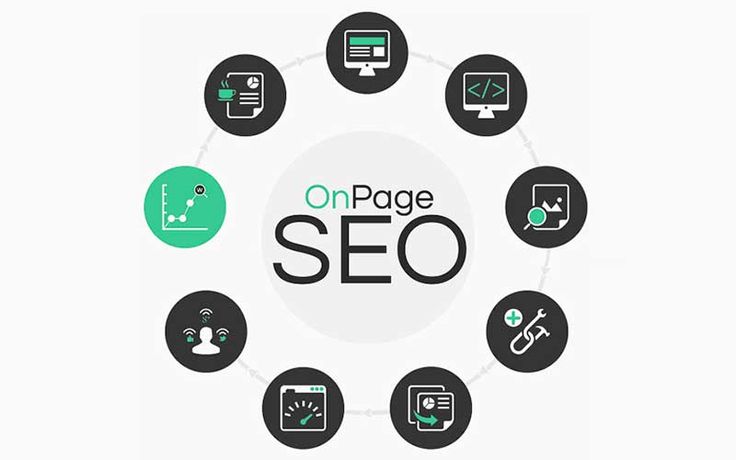In today’s competitive online landscape, merely having a well-designed website isn’t sufficient to guarantee the success of your online business. Similar to how an airplane requires a powerful engine and streamlined design to soar smoothly, your website must blend effective web design with Search Engine Optimization strategies to truly excel.
Success relies on the deliberate fusion of web design and SEO. SEO entails optimizing your website for higher rankings in search engine results pages (SERPs).
While SEO can be applied at any stage, it’s crucial to integrate it into the website development process right from the outset for optimal outcomes and efficiency. This ensures your website’s structure and content are tailored to support robust SEO practices.
This post explores essential considerations for SEO services providers in developing an effective SEO strategy, ensuring that your website not only attracts the right audience but also fulfills its intended objectives efficiently.
The Importance Of Design For SEO
User-Friendly Navigation
During the initial design phase, it’s crucial to prioritize integrating SEO best practices. While aesthetics play a role, it’s advisable to steer clear of overly complex or flashy designs that could impede your SEO efforts.
Streamlined Navigation
Search engines prioritize user experience. A website featuring intricate or confusing navigation may frustrate visitors, leading to increased bounce rates (the percentage of visitors leaving after viewing only one page).
Conversely, a well-structured website with clear and intuitive navigation enables users to swiftly find the information they seek. This not only enhances user experience but also signals to search engines the value and relevance of your website.
Prioritize Text-Based Navigation
While visually striking graphics and interactive elements may seem enticing, text-based navigation proves superior for SEO. Search engines heavily rely on text content to comprehend and index your website. Images and Javascript menus, while visually appealing, may not be easily interpreted by search engine crawlers, potentially hindering your website’s visibility.
Emphasize Quality Content
Prioritize delivering high-quality, informative, and engaging content throughout your website. This not only attracts visitors but also provides valuable material for search engines to crawl and index. Your content should possess the following characteristics:
- Relevance: Tailor content to resonate with your target audience and address their specific needs, establishing credibility as a reliable source.
- Uniqueness: Avoid duplicate content. Each page should offer fresh, valuable information to maintain visitor engagement.
- Keyword Integration: Research and incorporate relevant keywords naturally throughout your content, avoiding excessive repetition, which could negatively impact your rankings.
- Readability Optimization: Employ clear language, utilize headings and subheadings to break up text, and incorporate bullet points and concise paragraphs to enhance readability.
- Effective Calls to Action: Construct persuasive calls to action prompting visitors to engage in desired actions, whether it’s making a purchase, subscribing to a newsletter, or reaching out for further information.
Utilize Visuals Effectively
Leverage compelling visuals such as images and infographics effectively. Ensure optimization by including relevant keywords and alt descriptions to maximize their SEO impact.
Craft Catchy Titles and Unique Page Titles
Create compelling titles that capture attention and encourage user clicks. Each page should feature a unique, relevant title tag accurately reflecting its content and incorporating target keywords. This enhances both user experience and search engine categorization and indexing for specific search queries.
Polishing Your On-Page SEO

Once you’ve established a user-friendly website structure and informative content, it’s crucial to optimize various on-page SEO elements to enhance your website’s visibility and relevance in search engine results. Here’s how you can effectively tackle these aspects:
Permalinks
Permalinks are the permanent URLs that point to specific pages or posts on your website. Crafting user-friendly and keyword-rich permalinks is essential for improving both user experience and search engine optimization (SEO). By incorporating relevant keywords into your permalinks, you provide clear context to search engines about the content of your pages, thereby increasing the likelihood of your pages ranking higher in search results.
Keyword Selection
Keyword selection is a critical aspect of on-page SEO. Through thorough keyword research, you identify the terms and phrases that your target audience is using to search for content related to your website. By strategically integrating these keywords throughout your content, titles, and meta descriptions, you signal to search engines the relevance of your pages to specific search queries, ultimately improving your chances of ranking well in search results.
Meta Descriptions
Meta descriptions are brief summaries that appear below the title tag in search engine results. Crafting concise and informative meta descriptions is essential for enticing users to click through to your website. By accurately summarizing the content of your pages and incorporating relevant keywords, you increase the likelihood of users clicking on your link, thus driving more organic traffic to your website.
Tags
Tags are used to categorize and organize content on your website. By implementing relevant tags, you help both users and search engines understand the topics covered on your pages. Properly categorized content improves the overall navigability of your website, making it easier for users to find the information they are looking for. Tags can also help search engines better index and rank your content, leading to improved SEO performance.
W3C Validation
HTML validation involves ensuring that your website’s code complies with the standards set by the World Wide Web Consortium (W3C). Valid HTML code improves the readability and accessibility of your website for both search engine crawlers and human visitors. By fixing any code errors identified through validation tools like the W3C Validator, you can ensure that your website is properly interpreted by search engines, ultimately leading to better search engine rankings.
Image Optimization
Image optimization involves optimizing the images on your website for both users and search engines. This includes adding descriptive alt text to your images, which not only improves accessibility for visually impaired users but also provides context for search engines. By incorporating relevant keywords into your alt text and optimizing image file names, you can enhance the overall SEO performance of your website and improve your chances of ranking in image search results.
Testing And Refinement
Before launching your website, thorough testing is essential, just like for any product. Ensure you run your site through validation tools to detect HTML errors, broken links, spelling mistakes, and assess its mobile responsiveness. It’s crucial to address any issues identified during testing promptly to ensure a seamless user experience and maximize SEO performance. Here’s an overview of key areas to prioritize:
HTML Validation
Validating your HTML ensures that your website’s code adheres to the standards set by the World Wide Web Consortium (W3C). Validation tools help identify syntax errors, missing elements, or other issues that might cause problems for search engine crawlers or inconsistencies across different browsers. Fixing these errors ensures your website displays correctly and functions properly across various platforms, crucial for user satisfaction and SEO.
Link Checking
Links are essential for a positive user experience and SEO. By checking both internal (links within your website) and external (links to other websites), you can identify broken or incorrect links leading to error pages or irrelevant destinations. Fixing broken links prevents user frustration and signals to search engines that your site is well-maintained and trustworthy, positively impacting SEO rankings.
Grammar And Spelling
Quality content is key to engaging users and establishing credibility. Poor grammar and spelling mistakes undermine the professionalism of your website. Meticulously proofreading all content, including text on pages, blog posts, and product descriptions, ensures effective communication and portrays your brand positively.
Attention to detail enhances the user experience and contributes to better SEO performance, as search engines prioritize high-quality, error-free content.
Also Read: 7 Best Internal Linking Plugins for WordPress Websites
Simplifying Accessibility For Search Engine Crawlers

Robots.txt
Implementing a robots.txt file is essential for effectively guiding search engine crawlers on which specific pages they should index on your website. By configuring this file correctly, you can control the visibility of certain pages to search engines, ensuring that only relevant and desired content gets indexed and displayed in search results.
Site Submissions
Engage in a deliberate approach to submitting your website to directories that are pertinent to your industry or niche. This includes exploring both free and paid directory options to expand your website’s visibility and establish valuable backlinks.
However, it’s crucial to prioritize authoritative directories within your niche, as they hold more weight in terms of boosting your website’s credibility and improving its search engine ranking. By focusing on these directories, you can maximize the impact of your submissions and enhance your website’s online presence effectively.
Boosting Your Website’s Visibility Through Off-Page SEO

Link Building
This involves acquiring links from other websites back to your own. It’s crucial to seek backlinks from authoritative and relevant websites within your industry. These backlinks essentially act as ‘votes of confidence’ for your website in the eyes of search engines. When reputable sites link to yours, it signals to search engines that your content is valuable and worthy of being ranked higher in search results.
Social Media Marketing
Social media platforms are valuable for engaging with your audience and driving traffic to your website. By sharing your website content on platforms like Facebook, Twitter, LinkedIn, and Instagram, you can reach a wider audience and encourage users to visit your site. Additionally, active engagement and interaction with your followers help build brand loyalty and trust.
Content Marketing
Creating high-quality and relevant content, such as blog posts, infographics, and videos, can attract organic traffic to your website. When your content addresses the needs and interests of your target audience, it establishes your authority in your industry. It increases the likelihood of other websites linking back to your content.
Post Syndication
Syndicating your content on relevant websites and blogs introduces your brand to new audiences and enhances your online visibility. By reaching out to platforms that accept guest contributions or content syndication, you can broaden the reach of your content and drive traffic back to your website.
Press Releases
Issuing press releases about noteworthy events, product launches, or industry insights can garner media attention and increase brand awareness. Press releases distributed through online channels can generate backlinks from news sites and other publications, thereby driving traffic and boosting your website’s authority.
Guest Blogging
You can showcase your expertise to a broader audience by contributing guest posts to reputable industry publications and high-traffic websites. In exchange for your valuable content, you typically receive a byline or author bio with a link to your website, improving your site’s authority and visibility in search engine results.
Online Reviews And Reputation Management
Positive reviews from satisfied customers build trust and influence purchasing decisions. Encourage happy customers to leave reviews on platforms like Google My Business, Yelp, and industry-specific review sites. Additionally, actively monitoring and responding to both positive and negative reviews demonstrates your commitment to customer satisfaction and helps to maintain a positive online reputation.
Public Relations And Influencer Marketing
Public Relations (PR) involves strategically managing communication between a company or organization and its target audience to cultivate and maintain a positive image and reputation. A key aspect of PR is issuing press releases and official statements sent to media outlets, journalists, and stakeholders to announce significant company developments.
These developments can include various events such as product/service launches, milestones, or other noteworthy occurrences considered newsworthy. Through press releases, companies seek to secure media coverage in relevant publications, websites, and news outlets, thereby increasing brand visibility and attracting the interest of potential customers or clients.
This media coverage informs the public about the company’s latest offerings and enhances credibility and trust in the brand. Influencer Marketing is a promotional strategy involving collaboration with individuals with a significant following and influence within specific niches or industries.
These individuals, known as influencers, have dedicated audiences that trust their recommendations and opinions. By partnering with influencers relevant to their target market, companies leverage influencers’ credibility and reach to promote their website, products, or content to a broader audience.
Influencers may create sponsored content such as blog posts, social media posts, or videos showcasing the company’s offerings in an authentic and engaging manner. This marketing approach enables companies to tap into influencers’ existing fanbase and community, potentially reaching new customers interested in their products or services.
Furthermore, influencer marketing helps companies enhance brand awareness, foster brand affinity, and drive traffic to their website or other digital platforms.
Ongoing Monitoring And Improvement
SEO isn’t a one-time solution; it’s a continuing process that demands continuous effort and refinement. Regularly producing fresh and valuable content is pivotal to maintaining your website’s relevance and appeal to users. This persistent endeavor guarantees that your website stays competitive in search engine rankings.
Besides content creation, it’s crucial to track your website’s performance using analytics tools. Monitoring critical metrics like website traffic, keyword rankings, and user engagement yields valuable insights into the effectiveness of your SEO endeavors. Analyzing this data aids in pinpointing areas for enhancement and guiding adjustments to your SEO strategy.
Understanding which keywords excel and which require improvement is crucial for enhancing your website’s visibility. Through scrutinizing website traffic data, you can uncover trends and patterns that shape your content strategy. Adapting your approach based on these insights enables continuous refinement of your content and enhancement of your search engine ranking.
Continuously refining your SEO strategy based on data insights is essential for attracting more qualified leads. You can sustain a competitive advantage by remaining proactive and responsive to shifts in search engine algorithms and user behavior. This iterative process ensures your website stays pertinent and visible to your target audience, driving sustained organic traffic and fostering business growth.
Adopt Mobile-First Indexing
The internet search landscape now primarily occurs on mobile devices, marking a significant shift in user behavior. Google has adjusted algorithms to prioritize websites with seamless mobile browsing. As a website owner, it’s crucial to cater to mobile users by ensuring your site is mobile-friendly and responsive.
This goes beyond providing a mobile version; it involves adapting layout and content for various screen sizes. Offering an optimal viewing experience regardless of device aligns with Google’s criteria for ranking in mobile search results.
Being mobile-friendly isn’t just technical; it’s about meeting audience needs. A seamless mobile experience boosts engagement and satisfaction, driving more traffic. Neglecting this aspect risks penalization in search rankings.
Responsive design isn’t just about looks; it’s about creating a functional, intuitive interface. Investing in responsive design future-proofs your website, enhancing accessibility and usability. This benefits users and improves visibility in Google’s search algorithm, attracting organic traffic.
Embrace Change And Stay Updated
Developing a successful website with robust SEO requires patience and commitment. By implementing the strategies detailed in this article and consistently refining your approach, you can establish a website that attracts your target audience, achieves high rankings in search results, and ultimately boosts your online business.
To ensure your website stays competitive in the ever-changing digital landscape, tracking your analytics diligently is crucial. Utilize website analytics tools like Google Analytics to monitor traffic, user behavior, and keyword performance. This data enables you to gain insights into user interactions and pinpoint areas for enhancement.
The realm of SEO undergoes continuous evolution, as search engine algorithms are regularly updated and user behavior patterns evolve. To maintain competitiveness, keep abreast of the latest SEO trends and adhere to best practices. Subscribing to industry blogs, participating in SEO conferences, or engaging in online communities can assist you in staying ahead of these developments.
If navigating SEO feels overwhelming, consider consulting with a qualified SEO specialist. They can offer valuable insights and implement strategies to optimize your website for optimal impact.
By diligently following these steps and committing to ongoing optimization, you can maximize your website’s potential and leverage it to drive success in your online endeavors. Remember, SEO is a long-term endeavor, but the benefits of increased traffic, qualified leads, and enhanced brand visibility make it a worthwhile investment.
Conclusion
Integrating a user-friendly and visually appealing website design with a thorough SEO strategy can establish a robust online presence that draws in visitors, converts leads, and fosters sustainable growth for your business.
It is crucial to recognize that SEO requires continual dedication rather than viewing it as a one-time accomplishment. Sustained effort, continual optimization, and a commitment to delivering valuable content will enable your website to ascend and rank prominently on search engine results pages.
FAQs
What are some essential web design principles to enhance SEO performance?
Incorporating responsive design for mobile-friendliness, optimizing site speed through efficient coding and image optimization, using clear navigation, and intuitive site architecture, implementing schema markup for enhanced search engine understanding, and ensuring accessibility for all users are vital web design principles for SEO.
How can content strategy be integrated into web design and SEO efforts?
Content strategy should be seamlessly integrated into web design and SEO by creating a site structure that organizes content logically, using relevant keywords in page titles, headings, and meta descriptions, incorporating high-quality and engaging content that aligns with user intent, and regularly updating and optimizing content for freshness and relevance.
How does website usability contribute to SEO success?
User-friendly websites that are easy to navigate, visually appealing, and provide valuable content attract and retain visitors and signal to search engines that the site offers a positive user experience. Factors such as low bounce rates, high dwell time, and easy accessibility contribute to higher search engine rankings.
What are some common pitfalls to avoid when integrating web design and SEO?
Common pitfalls include ignoring mobile responsiveness, neglecting site speed optimization, using excessive or irrelevant keywords, overlooking accessibility considerations, neglecting to update and optimize content regularly, and failing to prioritize user experience over aesthetics.
























